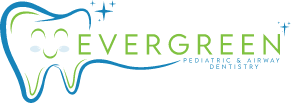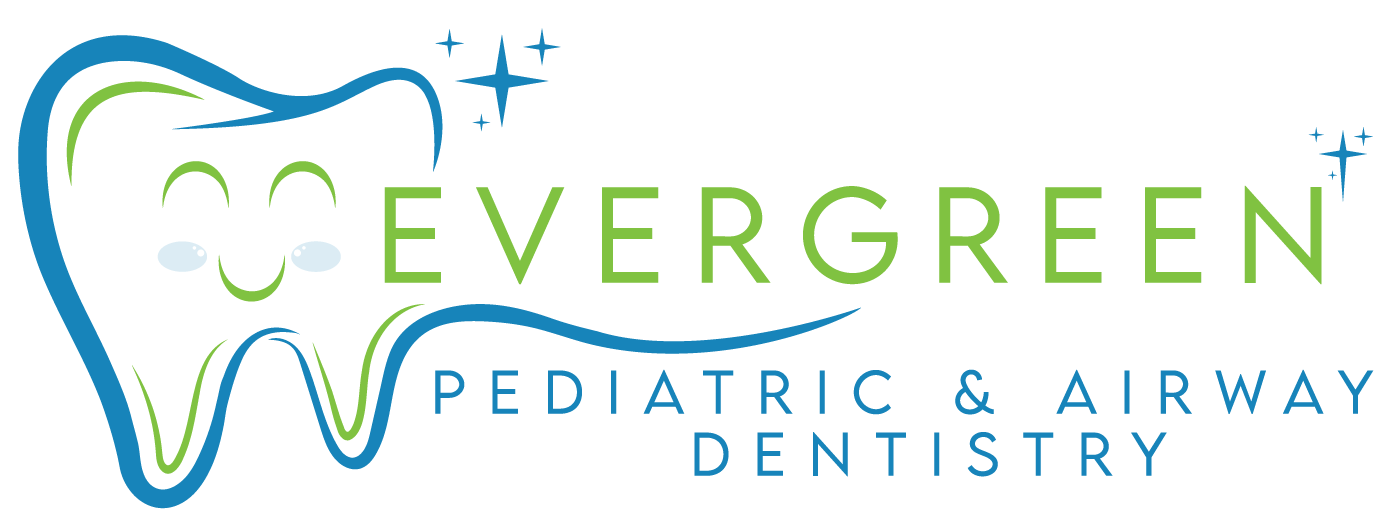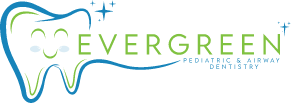Here’s something many parents don’t realize: dental professionals play a crucial role in diagnosing and managing pediatric obstructive sleep apnea, which can dramatically benefit your child’s health and development. Leveraging expertise in anatomy and child development, dentists provide pivotal early intervention that can change your child’s life trajectory.
The essential role of dental practitioners in recognizing early signs of pediatric OSA cannot be overstated for your child’s wellbeing. Dentists routinely examine oral cavity structure and development, enabling them to identify abnormalities that indicate OSA. They can spot enlarged tonsils or orthodontic issues that contribute to airway obstruction, often much sooner than other healthcare providers.
Dentists contribute specialized knowledge during the critical period of your child’s growth when intervention makes the biggest difference. The insights they offer guide treatment decisions, such as determining when it’s appropriate to intervene with orthodontic appliances that prevent OSA from worsening. Their understanding of craniofacial development ensures interventions are timely and contribute to long-term health benefits.
Dental interventions can profoundly impact your child’s quality of life in ways you might not expect. Therapies like rapid maxillary expansion have potential to improve not only sleep but also alleviate associated conditions such as behavior or learning issues. Through direct application of their unique skill sets, dental professionals foster better overall outcomes for children affected by OSA.
Recognizing the Warning Signs Your Child Needs Help
Dentists are instrumental in spotting early indicators of pediatric obstructive sleep apnea that are critical for ensuring prompt treatment to improve your child’s health. These symptoms include snoring, mouth breathing, and disturbed sleep that, when combined with other issues, require immediate attention for your child’s wellbeing.
Snoring represents a common warning sign that dentists can detect during routine examinations of your child. It can indicate restricted airways, which becomes a serious concern in young patients. Unlike occasional snoring due to colds or allergies, persistent snoring patterns raise red flags that merit further exploration, possibly indicating OSA.
Mouth breathing is another symptom often noticed by dental professionals during your child’s visits. Chronic mouth breathing can signal that your child isn’t receiving enough airflow through the nose, potentially because of OSA. This habit can lead to dry mouth, bad breath, and long-term oral health concerns, providing compelling reasons to investigate thoroughly.
Disturbed sleep observed by parents and reported during dental consultations can be the final puzzle piece in identifying OSA. This symptom, especially when correlated with drops in school performance or behavior changes, underscores urgency for professional evaluation. Recognizing these combined signs is critical; failure to do so can lead to worsening health conditions for your child.
Effective Screening That Catches Problems Early
Dentists stand at the forefront of early detection for pediatric obstructive sleep apnea with established protocols essential for timely and accurate diagnosis. By incorporating specific evaluation tools and understanding your child’s risk factors, dental professionals ensure that no child with potential OSA gets overlooked.
Incorporating tools like the Pediatric Sleep Questionnaire during dental examinations represents a key strategy for your child’s health. This questionnaire provides structured format for parents to report symptoms related to their child’s sleep patterns and behaviors, which can be early OSA indicators. When used consistently, it becomes an effective method for distinguishing children who need further assessment.
By analyzing responses from screening tools, dentists gather comprehensive insights into your child’s OSA risk profile. Observations like consistent snoring, restless sleep, or behavior changes can indicate higher OSA risk. Through thorough evaluation, dentists identify at-risk children earlier, which proves crucial for prevention and timely intervention.
When screening points to possible OSA diagnosis, swift referral to specialized care becomes imperative for your child. For example, a child who persistently snores and has concentration difficulties might be referred to a sleep specialist for further testing. Such referrals are vital to management processes, ensuring children receive required care without delay.
Personalized Treatment That Grows with Your Child
Addressing pediatric obstructive sleep apnea effectively requires personalized treatment strategies that adapt to your child’s growth and development. The main goals involve creating treatment plans that respond to anatomical changes, utilizing orthodontic appliances for airway improvement, and maintaining clear communication between healthcare professionals for continuity of care.
Customization of treatment plans becomes essential due to the dynamic nature of your child’s development. As children grow, factors such as jaw alignment and palate shape change, influencing their susceptibility to OSA or condition severity. Treatment strategies must be revisited and adjusted periodically to align with your child’s current anatomical structure and needs.
When you’re considering comprehensive treatment options for pediatric OSA, several key interventions work together effectively:
- Orthodontic appliances: Devices expand the palate or advance the jaw, increasing airway space and reducing sleep obstruction
- Growth monitoring: Regular assessments track how your child’s development affects their OSA condition and treatment needs
- Collaborative care: Continuous communication between dental and medical professionals ensures consistent, effective management
- Treatment adjustments: Regular modifications to treatment plans as your child grows maintain optimal therapeutic benefits
- Family education: Teaching parents about OSA management helps maintain treatment success at home between appointments
These interventions work synergistically to address both immediate OSA symptoms and long-term developmental considerations. The application of orthodontic appliances can significantly enhance airway patency in affected children, often proving critical in reducing OSA symptoms and improving sleep quality.
Continuous collaboration and communication between dental and medical professionals remain fundamental for sustained treatment success. Regular check-ins allow sharing information on your child’s progress or emerging challenges, supporting consistent management and enabling treatment plan adjustments as your child grows.
Strategic Appliance Therapy That Actually Works
Orthodontic and oral appliance therapies are targeted approaches to alleviate pediatric obstructive sleep apnea by addressing anatomical issues that contribute to its occurrence. Strategic application of these devices aims to resolve structural causes of OSA, enhance airway dimensions, and ultimately improve sleep health in children.
Rapid maxillary expanders represent a prime example of appliances that can significantly alter craniofacial structure for the better. By gently widening the upper jaw, these expanders increase nasal cavity volume, promoting better airflow and reducing sleep apnea episodes. This aspect of appliance therapy directly tackles primary structural causes contributing to OSA in children.
Mandibular advancement devices serve as another effective tool in appliance therapy for pediatric OSA. These get custom-fitted to each child and work by subtly repositioning the lower jaw forward, increasing airway space and lessening obstruction during sleep. Precise customization of these appliances plays critical roles in their efficacy and child comfort.
The goal of such interventions is instigating airway changes that contribute to improved breathing patterns during sleep. Success of these therapies often reflects in better sleep quality and overall health in children suffering from OSA, making them central to strategic responses to this disorder.

Knowing When to Escalate Treatment
In managing pediatric obstructive sleep apnea, it’s important recognizing when escalating interventions becomes necessary for your child’s health. This decision-making process gets based on observing clinical symptoms, evaluating current treatment effectiveness, and collaborating with specialists to ensure optimal care.
Constant respiratory problems, despite initial treatment efforts, strongly suggest your child’s OSA may require more aggressive intervention. Persistent symptoms such as ongoing sleep disturbances or daytime fatigue are clear indicators that current therapy may not sufficiently address airway obstruction. These clinical signs warrant deeper examination of treatment plans and exploration of alternative therapies.
Experiencing developmental delays can be serious consequences of untreated or under-treated OSA in your child. If academic performance begins declining, it could relate to inadequate sleep from OSA, highlighting urgency for treatment escalation. Monitoring these non-respiratory indicators proves critical as they provide valuable insights into overall OSA treatment regimen efficacy.
Working closely with teams of medical specialists becomes crucial in deciding to enhance OSA therapy for your child. Communication between dentists, sleep medicine doctors, and pediatricians facilitates comprehensive views of your child’s health, enabling informed decisions about treatment adjustments that best match evolving needs.
Building a Support Network for Your Child
Effectively managing pediatric obstructive sleep apnea requires establishing collaborative networks of healthcare providers that include various specialists contributing to well-rounded care plans. Such integration of professional expertise proves crucial to delivering holistic treatment to children suffering from this condition.
Dental practices act as crucial connectors in these networks, often being first to identify OSA signs during routine check-ups. They can initiate referrals to other health professionals when more comprehensive care becomes needed. These practices prove integral in assembling teams that include pediatricians, sleep specialists, and ENT doctors who all play unique roles.
Collaboration between various health specialists leads to more effective solutions for your child’s needs. While dentists might provide orthodontic appliances to address airway obstruction, sleep specialists can monitor sleep patterns and suggest nighttime routine changes. Meanwhile, pediatricians oversee overall development, ensuring OSA interventions are compatible with general health.
Working together, this synergistic approach ensures that both direct OSA symptoms and indirect effects on your child’s behavior or emotional state get addressed. Through regular communication and insight sharing, medical professionals form scaffolds of support for children with OSA, contributing to more successful treatment outcomes.
Prevention Strategies That Start Early
Preventing pediatric obstructive sleep apnea starts with educating both parents and healthcare providers about the importance of early oral-facial development and its effect on airway health. Informed practices and habits serve as proactive defense mechanisms against OSA for your child’s long-term wellbeing.
Understanding the critical role of early oral-facial growth becomes fundamental for preventing pediatric OSA. Educating parents on normal developmental milestones helps them recognize potential deviations that may signal OSA risk. Children’s eating and speech habits may provide clues about their oral-facial health and any need for early intervention.
Healthcare providers can empower parents with knowledge about practices that aid in maintaining proper airway health for children. Teaching strategies such as positioning children to sleep on their backs, encouraging nasal breathing, and monitoring for persistent snoring can be effective prevention methods. Such daily habits prevent or lessen OSA symptoms by keeping airways open during growth.
Proactive strategies hold significant importance for your child’s wellbeing, incorporating prevention into everyday family life. By acting early, parents contribute to healthy development of their child’s airway, potentially reducing needs for more invasive treatments later in life. Long-term vigilance in education and preventive care proves valuable in safeguarding against pediatric OSA.
Your Child’s Path to Better Sleep and Health
Dental interventions represent a powerful force in enhancing management of pediatric obstructive sleep apnea. With multidisciplinary approaches, vigilant monitoring, and cooperative efforts, Dr. Kim plays significant roles in improving health and development of children with OSA through strategies that impact both immediate care and long-term life trajectories.
By employing comprehensive approaches, dental specialists scrutinize every aspect of your child’s oral health as it relates to OSA. This includes regular assessments of jaw and tooth alignment, monitoring for symptoms such as snoring and mouth breathing, and ensuring early interventions that align with growth and developmental stages. Such meticulous attention prevents OSA progression and associated complications.
Vigilance in monitoring your child’s response to treatment represents another key factor for success. Dental practitioners must be proactive in observing prescribed intervention effectiveness, ready to adjust treatment plans as your child’s condition evolves. This close observation maximizes treatment benefits and strengthens long-term efficacy for optimal outcomes.
Collaboration across various healthcare specialties remains vital in managing pediatric OSA comprehensively. Dr. Kim, in partnership with pediatricians, sleep specialists, and orthodontists, delivers integrated care addressing the full spectrum of your child’s needs. This cooperative approach enriches quality of care, promoting overall quality of life improvement and setting precedents for holistic pediatric health management.
Ready to help your child breathe better and sleep soundly? Contact Dr. Kim today to schedule a comprehensive evaluation and discover how specialized pediatric sleep apnea treatment can transform your child’s health, behavior, and development for a brighter future.
Evergreen Pediatric & Airway Dentistry
Dr. Susan Kim
12910 Totem Lake Blvd NE #103
Kirkland, WA 98034
(425) 814-3196
Get Directions on Google Maps
evergreenkidsdentist.com
Frequently Asked Questions
How can a dentist help if I suspect my child has sleep apnea?
If you suspect your child has pediatric OSA, a dentist can spot early signs like snoring or disrupted sleep and recommend treatments like orthodontic appliances, contributing to your child’s better night’s rest and overall wellbeing through specialized intervention.
What does ongoing pediatric OSA management involve?
For effective pediatric OSA management, dentists perform regular examinations to adjust treatments as your child grows, ensuring tailored care that evolves with their developmental needs and maintains optimal therapeutic benefits throughout childhood.
How can parents help prevent pediatric sleep apnea?
Parents can help prevent pediatric OSA by encouraging good oral and sleep habits, like nasal breathing and proper sleeping positions, fostering their child’s healthy development from the start and reducing the risk of airway obstruction during sleep.



